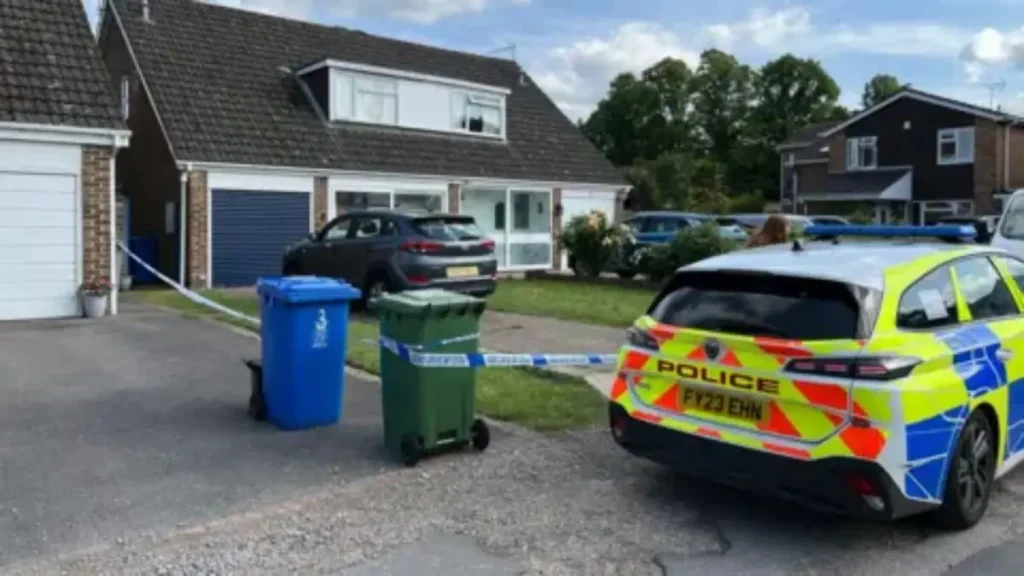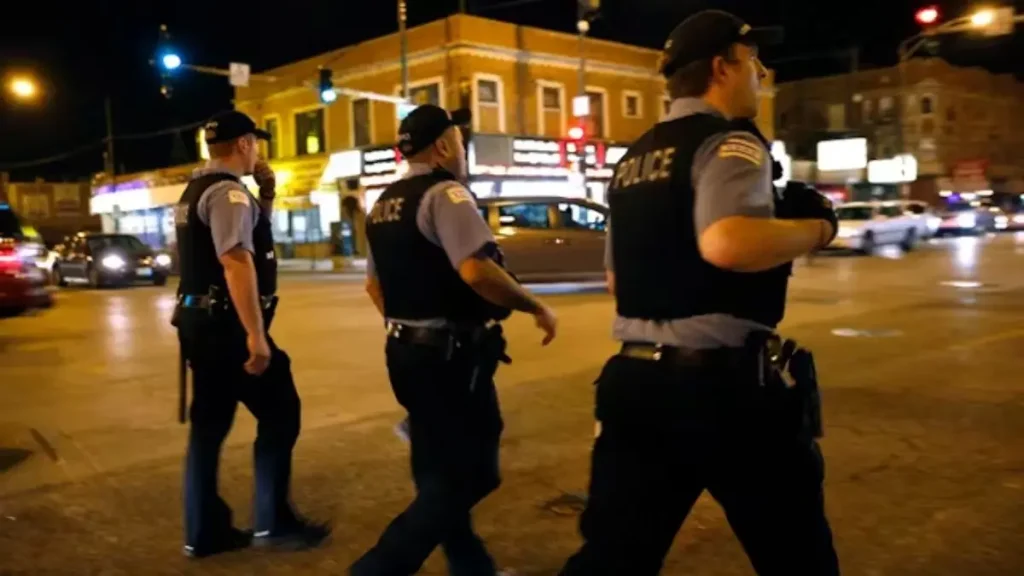3-Year-Old and Mother Found Dead in Parked Car Outside Pennsylvania Home
It’s the kind of news that hits hard — not just because it’s tragic, but because it happened somewhere that’s supposed to feel safe: home.
On Sunday evening, a 42-year-old mother, Agnes Dawidowicz, and her 3-year-old son Charlie were found dead inside their parked car at their house in Milford Township, Pennsylvania. The car was inside the garage. First responders were called around 5 p.m. to the family’s home on Barley Drive, and what they found is still shaking the community.
No cause of death has been confirmed yet. The autopsies are pending, and police say the investigation is ongoing. But when a mom and her toddler die like this, right outside their own front door, it raises a lot of questions — and fears — about what could have gone wrong.
This isn’t just another heartbreaking story. It’s a wake-up call. And if you’re a parent, a neighbor, or just someone trying to make sense of how something like this could happen, I want to walk you through the facts, the gaps, and what this means for all of us.
What We Know About the Incident?
Here’s what’s been confirmed.
On Sunday, June 8th, around 5 p.m., emergency responders were called to a home on Barley Drive in Milford Township, Pennsylvania. When they got there, they found Agnes and her 3-year-old son Charlie unresponsive in a parked car that was inside the home’s garage.
According to People, both were pronounced dead at the scene. The Pennsylvania State Police and the Bucks County Coroner’s Office are now leading the investigation. Autopsy results haven’t been released yet, and officials haven’t confirmed what caused their deaths. What they have said is that the situation remains under active investigation.
This wasn’t a car crash. It wasn’t a crime scene, at least not as far as the public knows right now. And that’s part of what makes it so unsettling — it’s a mystery in plain sight, unfolding in a quiet residential street.
Sadly, this isn’t the first time a tragedy has unfolded inside a parked car. In another heartbreaking case, a person was found dead in a vehicle following a house fire in Mount Laurel — a reminder that danger isn’t always visible from the outside.
Who They Were: A Glimpse Into Their Lives
Agnes Dawidowicz was a respected biotech professional. She worked at Almac Group and had been part of their team since 2014. A graduate of Rutgers and Colorado Christian University, she was known for her quiet dedication and strong work ethic.
Her son Charlie was just three years old — a happy, curious toddler, according to those who knew the family. He was the kind of kid neighbors remembered as “always smiling,” the kind who brought a bit of light just by being around.
Today shared that Agnes lived in the home with her husband, who was not present when the incident occurred. There’s been no public statement from him yet, and it’s clear the community is trying to give him space in the face of an unimaginable loss.
Cause of Death: What’s Known, What Isn’t

This is the part everyone wants answers to — and right now, we just don’t have them.
The Bucks County Coroner has not released the official cause or manner of death for either Agnes or Charlie. There’s been speculation — some have asked if carbon monoxide poisoning from a running vehicle inside the closed garage might be to blame — but so far, nothing has been confirmed. And in cases like this, speculating without facts does more harm than good.
Penn Live reported that the car was found inside the garage, not the driveway, and that both mother and child were in the vehicle when emergency crews arrived. That detail alone — the closed garage — has sparked concern about carbon monoxide exposure, especially during the warmer months when cars might be left idling for air conditioning.
Until the autopsy reports come in, we’re left with more questions than answers. But this is exactly the kind of case that highlights how invisible risks — like odorless gas exposure — can become fatal in a matter of minutes.
In similar cases, like the Levittown house fires currently under arson investigation, it often takes weeks before full clarity emerges. That’s why it’s important to understand how these processes unfold — and what updates to look for.
A Community in Shock
No one expects this to happen on a quiet street in Bucks County.
Neighbors say the family was kind, close-knit, and low-key. One neighbor told local reporters that Agnes “was always with her son,” and that Charlie “was such a sweet, friendly little boy.” It’s clear from everything being said that this loss is deeply personal to those living nearby.
What’s missing, though, is clarity — not just about how it happened, but how to make sure something like this never happens again.
This isn’t just a tragedy for one family. It’s something the entire community is feeling — and trying to process.
Has anything like this ever happened near your neighborhood — or maybe something that made you rethink how “safe” home really is? Share your thoughts in the comments — even one story can make someone pause and stay safer.
What Everyone’s Missing: The Unspoken Risks
There’s one thing almost every article skips: how easily this could happen to anyone.
Most reports repeat the basics — who, where, when — but few are asking the bigger question: Was this preventable? Was it heat-related? Was it carbon monoxide? Was the car running? Was the garage closed? There’s a huge gap here in both facts and awareness.
Right now, there’s no confirmation of what led to the deaths — but based on what we know (a parked car, inside a garage, two victims), we need to talk about real, deadly risks that aren’t obvious.
This isn’t just about one case. It’s about garage safety, vehicle ventilation, and the small mistakes — like leaving a car running for a moment — that can turn fatal in minutes.
Most media outlets haven’t touched this angle. And yet, this might be the only part that helps someone else avoid a tragedy.
We’ve seen that these “hidden risks” often don’t get enough coverage. That’s why we’ve started curating real-life safety alerts and updates directly where you won’t miss them — on WhatsApp. Get stories like this, fast and clutter-free — straight to your phone.
Invisible Dangers: Carbon Monoxide and Garage Safety
Let’s break this down simply.
Carbon monoxide (CO) is a colorless, odorless gas. If you leave a car running in a closed space — even for a short time — CO builds up fast. You won’t see it. You won’t smell it. But once it’s in your lungs, it can shut your body down before you even realize what’s happening.
According to the CDC, more than 400 people die from CO poisoning in the U.S. each year, and thousands more end up in emergency rooms. Cars left idling in garages are one of the most common sources.
Here’s how it happens:
- You park your car in the garage.
- You leave it running for AC, charging, or just a quick errand.
- The garage fills with CO.
- If you stay inside the car — or even in the garage — it can become fatal in minutes.
And during summer, there’s another risk: heatstroke. Inside a closed car, even with windows cracked, temperatures can skyrocket, especially for a child.
Most people don’t realize how fast these conditions can become deadly. That’s why it’s not enough to mourn — we need to talk prevention.
Basic safety reminders:
- Never leave a car running in a closed garage — even briefly.
- Install carbon monoxide detectors inside your home near garages.
- Always double-check that the car is off — especially push-to-start vehicles.
- Keep your garage ventilated, even when the car is off.
Just like carbon monoxide, fire is another silent threat. A recent incident in Goshen, New York claimed the lives of a father and his two sons — all inside their home. The common thread? A regular day turned tragic.
What Happens Next: The Investigation Timeline

So what now?
In cases like this, here’s what usually unfolds:
- The coroner’s office completes autopsies, typically within a few days.
- Toxicology tests may take longer — sometimes 1–2 weeks.
- Once the results are in, the official cause and manner of death will be released.
- Law enforcement may then close the case, or investigate further if anything suspicious is found.
As of now, authorities haven’t said anything to suggest foul play. But until toxicology reports confirm it, everything’s just speculation.
For the family, the hardest part is the wait. For the public, it’s the not knowing — the fear that something this tragic could still be unexplained.
We’ll update this story as soon as the medical examiner’s report becomes public.
Final Thoughts
Some stories hit hard not because they’re rare, but because they could happen to anyone. What happened to Agnes and Charlie is heartbreaking — but it’s also a reminder to slow down, pay attention, and not take routine for granted.
If even one life is saved because of this awareness, then their story will have sparked something meaningful.
Looking for more stories around safety and real-life incidents like this? Explore our Home Incident section to stay informed — and maybe a little more prepared.
Disclaimer: This article is based on publicly available news reports as of June 2025. Cause and manner of death have not been officially confirmed by authorities. Please avoid speculation and refer to verified updates from local officials.


